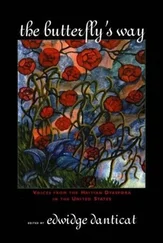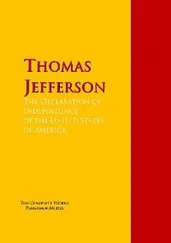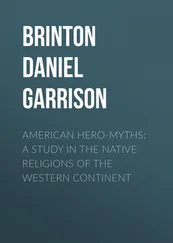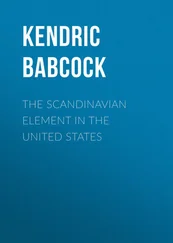Hubert Bancroft - The Native Races [of the Pacific states], Volume 5, Primitive History
Здесь есть возможность читать онлайн «Hubert Bancroft - The Native Races [of the Pacific states], Volume 5, Primitive History» — ознакомительный отрывок электронной книги совершенно бесплатно, а после прочтения отрывка купить полную версию. В некоторых случаях можно слушать аудио, скачать через торрент в формате fb2 и присутствует краткое содержание. Жанр: foreign_antique, foreign_prose, на английском языке. Описание произведения, (предисловие) а так же отзывы посетителей доступны на портале библиотеки ЛибКат.
- Название:The Native Races [of the Pacific states], Volume 5, Primitive History
- Автор:
- Жанр:
- Год:неизвестен
- ISBN:нет данных
- Рейтинг книги:5 / 5. Голосов: 1
-
Избранное:Добавить в избранное
- Отзывы:
-
Ваша оценка:
- 100
- 1
- 2
- 3
- 4
- 5
The Native Races [of the Pacific states], Volume 5, Primitive History: краткое содержание, описание и аннотация
Предлагаем к чтению аннотацию, описание, краткое содержание или предисловие (зависит от того, что написал сам автор книги «The Native Races [of the Pacific states], Volume 5, Primitive History»). Если вы не нашли необходимую информацию о книге — напишите в комментариях, мы постараемся отыскать её.
The Native Races [of the Pacific states], Volume 5, Primitive History — читать онлайн ознакомительный отрывок
Ниже представлен текст книги, разбитый по страницам. Система сохранения места последней прочитанной страницы, позволяет с удобством читать онлайн бесплатно книгу «The Native Races [of the Pacific states], Volume 5, Primitive History», без необходимости каждый раз заново искать на чём Вы остановились. Поставьте закладку, и сможете в любой момент перейти на страницу, на которой закончили чтение.
Интервал:
Закладка:
The more prominent of the analogies adduced by Lord Kingsborough may be briefly enumerated as follows:
The religion of the Mexicans strongly resembled that of the Jews, in many minor details, as will be presently seen, and the two were practically alike, to a certain extent, in their very foundation; for, as the Jews acknowledged a multitude of angels, archangels, principalities, thrones, dominions, and powers, as the subordinate personages of their hierarchy, so did the Mexicans acknowledge the unity of the Deity in the person of Tezcatlipoca, and at the same time worship a great number of other imaginary beings. Both believed in a plurality of devils subordinate to one head, who was called by the Mexicans Mictlantecutli, and by the Jews Satan. Indeed, it seems that the Jews actually worshiped and made offerings to Satan as the Mexicans did to their 'god of hell.' It is probable that the Toltecs were acquainted with the sin of the first man, committed at the suggestion of the woman, herself deceived by the serpent, who tempted her with the fruit of the forbidden tree, who was the origin of all our calamities, and by whom death came into the world. 169We have seen in this chapter that Kingsborough supposes the Messiah and his story to have been familiar to the Mexicans. There is reason to believe that the Mexicans, like the Jews, offered meat and drink offerings to stones. 170There are striking similarities between the Babel, flood, and creation myths of the Hebrews and the Americans. 171Both Jews and Mexicans were fond of appealing in their adjurations to the heaven and the earth. 172Both were extremely superstitious, and firm believers in prodigies. 173The character and history of Christ and Huitzilopochtli present certain analogies. 174It is very probable that the Sabbath of the seventh day was known in some parts of America. 175The Mexicans applied the blood of sacrifices to the same uses as the Jews; they poured it upon the earth, they sprinkled it, they marked persons with it, and they smeared it upon walls and other inanimate things. 176No one but the Jewish high-priest might enter the Holy of Holies. A similar custom obtained in Peru. 177Both Mexicans and Jews regarded certain animals as unclean and unfit for food. 178Some of the Americans believed with some of the Talmudists in a plurality of souls. 179That man was created in the image of God was a part of the Mexican belief. 180It was customary among the Mexicans to eat the flesh of sacrifices of atonement. 181There are many points of resemblance between Tezcatlipoca and Jehovah. 182Ablutions formed an essential part of the ceremonial law of the Jews and Mexicans. 183The opinions of the Mexicans with regard to the resurrection of the body, accorded with those of the Jews. 184The Mexican temple, like the Jewish, faced the east. 185"As amongst the Jews the ark was a sort of portable temple in which the Deity was supposed to be continually present, and which was accordingly borne on the shoulders of the priests as a sure refuge and defence from their enemies, so amongst the Mexicans and the Indians of Michoacan and Honduras an ark was held in the highest veneration, and was considered an object too sacred to be touched by any but the priests. The same religious reverence for the ark is stated by Adair to have existed among the Cherokee and other Indian tribes inhabiting the banks of the Mississippi, and his testimony is corroborated by the accounts of Spanish authors of the greatest veracity. The nature and use of the ark having been explained, it is needless to observe that its form might have been various, although Scripture declares that the Hebrew ark was of the simplest construction." And again: "it would appear from many passages of the Old Testament, that the Jews believed in the real presence of God in the ark, as the Roman Catholics believe in the real presence of Christ in the sacrament, from whom it is probable the Mexicans borrowed the notion that He, whom the heaven of heavens cannot contain, and whose glory fills all space, could be confined within the precincts of a narrow ark and be borne by a set of weak and frail priests. If the belief of the Mexicans had not been analogous to that of the ancient Jews, the early Spanish missionaries would certainly have expressed their indignation of the absurd credulity of those who believed that their omnipresent god Huitzilopochtli was carried in an ark on priests' shoulders; but of the ark of the Mexicans they say but little, fearing, as it would appear, to tread too boldly on the burning ashes of Mount Sinai." 186
The Yucatec conception of a Trinity resembles the Hebrew. 187It is probable that Quetzalcoatl, whose proper name signifies 'feathered serpent,' was so called after the brazen serpent which Moses lifted up in the wilderness, the feathers perhaps alluding to the rabbinical tradition that the fiery serpents which god sent against the Israelites were of a winged species. 188
The Mexicans, like the Jews, saluted the four cardinal points, in their worship. 189There was much in connection with sacrifices that was common to Mexicans and Jews. 190It is possible that the myth relating to Quetzalcoatl's disappearance in the sea, indicates a knowledge of the book of the prophet Jonah. 191
The Mexicans say that they wrestled at times with Quetzalcoatl, even as Jacob wrestled with God. 192In various religious rites and observances, such as circumcision, 193confession, 194and communion, 195there was much similarity. Salt was an article highly esteemed by the Mexicans, and the Jews always offered it in their oblations. 196Among the Jews, the firstling of an ass had to be redeemed with a lamb, or if unredeemed, its neck was broken. This command of Moses should be considered in reference to the custom of sacrificing children which existed in Mexico and Peru. 197The spectacle of a king performing a dance as an act of religion was witnessed by the Jews as well as by Mexicans. 198As the Israelites were conducted from Egypt by Moses and Aaron who were accompanied by their sister Miriam, so the Aztecs departed from Aztlan under the guidance of Huitziton and Tecpatzin, the former of whom is named by Acosta and Herrera, Mexi, attended likewise by their sister Quilaztli, or, as she is otherwise named Chimalman or Malinalli, both of which latter names have some resemblance to Miriam, as Mexi has to Moses. 199In the Mexican language amoxtli signifies flags or bulrushes, the derivation of which name, from atl , water, and moxtli , might allude to the flags in which Moses had been preserved. 200The painting of Boturini seems actually to represent Huitzilopochtli appearing in a burning bush in the mountain of Teoculhuacan to the Aztecs. 201The same writer also relates that when the Mexicans in the course of their migration had arrived at Apanco, the people of that province were inclined to oppose their further progress, but that Huitzilopochtli aided the Mexicans by causing a brook that ran in the neighborhood to overflow its banks. This reminds us of what is said in the third chapter of Joshua of the Jordan overflowing its banks and dividing to let the priests who bore the ark pass through. 202As Moses and Aaron died in the wilderness without reaching the land of Canaan, so Huitziton and Tecpatzin died before the Mexicans arrived in the land of Anáhuac. 203The Mexicans hung up the heads of their sacrificed enemies; and this also appears to have been a Jewish practice, as the following quotation from the twenty-fifth chapter of Numbers will show: "And the Lord said unto Moses, Take all the heads of the people, and hang them up before the Lord against the sun , that the fierce anger of the Lord may be turned away from Israel." 204In a Mexican painting in the Bodleian library at Oxford is a symbol very strongly resembling the jaw-bone of an ass from the side of which water seems to flow forth, which might allude to the story of Samson slaying a thousand of the Philistines with such a bone, which remained miraculously unbroken in his hands, and from which he afterwards quenched his thirst. 205They were fond of wearing dresses of scarlet and of showy colors, as were also the Jews. The exclamation of the prophet, "Who is this that cometh from Bozrah?" and many other passages of the Old Testament might be cited to show that the Jews entertained a great predilection for scarlet. 206It is impossible, on reading what Mexican mythology records of the war in heaven and of the fall of Tzontemoc and the other rebellious spirits; of the creation of light by the word of Tonacatecutli, and of the division of the waters; of the sin of Ytztlacoliuhqui, and his blindness and nakedness; of the temptation of Suchiquecal, and her disobedience in gathering roses from a tree, and the consequent misery and disgrace of herself and all her posterity, – not to recognize Scriptural analogies. 207Other Hebrew analogies Lord Kingsborough finds in America, in the dress, insignia, and duties of priests; in innumerable superstitions concerning dreams, apparitions, eclipses, and other more common-place events; in certain festivals for rain; in burial and mourning ceremonies; in the diseases most common among the people; in certain regularly observed festivals; in the dress of certain nations; in established laws; in physical features; in architecture; in various minor observances, such as offering water to a stranger that he might wash his feet, eating dust in token of humility, anointing with oil, and so forth; in the sacrifice of prisoners; in manner and style of oratory; in the stories of giants; in the respect paid to God's name; in games of chance; in marriage relations; in childbirth ceremonies; in religious ideas of all sorts; in respect paid to kings; in uses of metals; in treatment of criminals, and punishment of crimes; in charitable practices; in social customs; and in a vast number of other particulars. 208
Читать дальшеИнтервал:
Закладка:
Похожие книги на «The Native Races [of the Pacific states], Volume 5, Primitive History»
Представляем Вашему вниманию похожие книги на «The Native Races [of the Pacific states], Volume 5, Primitive History» списком для выбора. Мы отобрали схожую по названию и смыслу литературу в надежде предоставить читателям больше вариантов отыскать новые, интересные, ещё непрочитанные произведения.
Обсуждение, отзывы о книге «The Native Races [of the Pacific states], Volume 5, Primitive History» и просто собственные мнения читателей. Оставьте ваши комментарии, напишите, что Вы думаете о произведении, его смысле или главных героях. Укажите что конкретно понравилось, а что нет, и почему Вы так считаете.
![Hubert Bancroft The Native Races [of the Pacific states], Volume 5, Primitive History обложка книги](/books/749157/hubert-bancroft-the-native-races-of-the-pacific-s-cover.webp)









![Hubert Bancroft - The Native Races [of the Pacific states], Volume 1, Wild Tribes](/books/750126/hubert-bancroft-the-native-races-of-the-pacific-s-thumb.webp)

